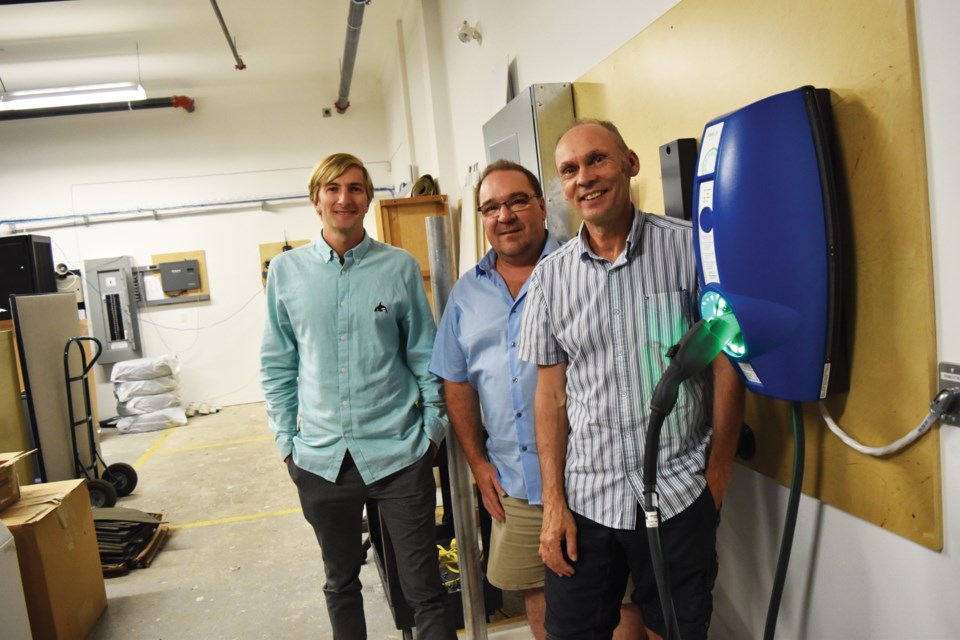Tucked into a nondescript building complex on Gibsons Way is a little technology company with big, electric ambitions.
“The days of the old grid are over,” Don Bildfell, founder of Cypress Power, told Coast Reporter. His three-person team is working with UBC on a project that’s part of what the university is calling a “city-scale living laboratory.”
That living laboratory concept began with funding from the federal government in 2017, with the aim of combining emerging transportation, energy and communications technology with urban design to build real-world examples at UBC of how a city could work if it relied primarily on renewable energy.
Last week, another round of funding was announced for a component of that project – the creation of a parkade that could turn electric vehicles into “rolling batteries,” Bildfell said.
The garage would be transformed into what Bildfell calls “a kind of a mobility centre of the future.” Its roof would be outfitted with solar panels and it would contain an energy storage and distribution system, as well as bi-directional electric vehicle chargers, which Bildfell calls “the next evolution in charging.”
The federal government’s Green Infrastructure Program is providing $2.3 million for the project, which will “inform the development of guidelines for wireless charging,” according to a release.
Bildfell’s company will be installing eight bi-directional chargers with different configurations, along with their proprietary software to maintain and monitor the system. Funding will also be used by UBC to purchase about 25 electric vehicles, which will be monitored as part of the experiment.
The parkade would act as the hardware hub for the entire living-lab system, with Cypress Power contributing its expertise in electric vehicle charging, monitoring and data management. “What they’re really trying to get at is how to de-carbonize transportation,” Bildfell said.
Bi-directional electric charging allows cars to suck power from the grid and to store it, effectively turning vehicles into multipurpose batteries. This means that if the power went out, Bildfell said, “instead of having a generator … you could plug your car in, technically, and power your home.”
Cypress Power has approximately 80 electric charging systems already installed at UBC campuses, but the bi-directional chargers will be a first.
Only two vehicles on the market are capable of bi-directional charging – a Nissan and Mitsubishi – but researchers at UBC want to explore how energy could be distributed and used if this type of charging became the norm. “They’re trying to simulate a small municipality,” explained Denys Jones, Cypress Power’s hardware engineer.
Examples include school buildings drawing power from a fleet of electric school buses when they aren’t being used – something that could prove particularly useful in places like California, where electricity costs more during peak-demand hours.
Bildfell said they are hoping this project could be repeated elsewhere. “There are a lot of other universities and cities that are paying attention to this and will be touring it when it’s built and the opportunity to do this over and over again is hopefully high.”
He is optimistic that despite a slow start, electric charging is the way of the future. “It’s just maybe a year and a half ago that the cars being sold caught up to the charging infrastructure and now the demand is ramping up again,” he said. “All the signs are there, it’s a little slower than we’d hoped. If you look at the big picture, to change mobility doesn’t happen overnight.”



